~ Deep Looking for the Fun of It ~
Here at the intersection of past and future, we like pictures. A lot. For the last six years I've blogged at PhillyHistory drawing images from the Philadelphia City Archives, working with TIF files that allow me to zoom in with at high-definition. What a treat it is to look at—and into—the past this way! You never know what you are going to see. Take, for instance, this close up of a firehouse on Market near 21st Street, photographed in 1908:
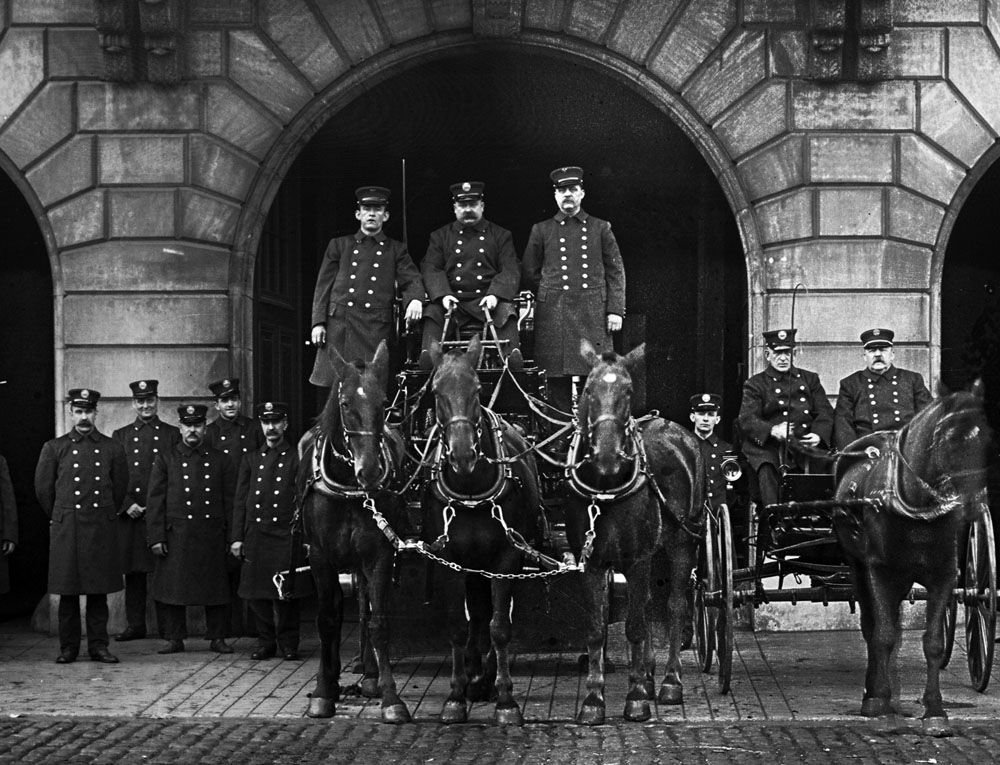
By the 1870s, dozens of small private fire companies were no longer adequate in an expanding city. Professional firefighting meant building new firehouses in every neighborhood. One of the largest and most evocative of new firefighting competency and readiness was the headquarters in Center City. Above, we can "read" their faces and so much more. Below, we literally get the full picture.
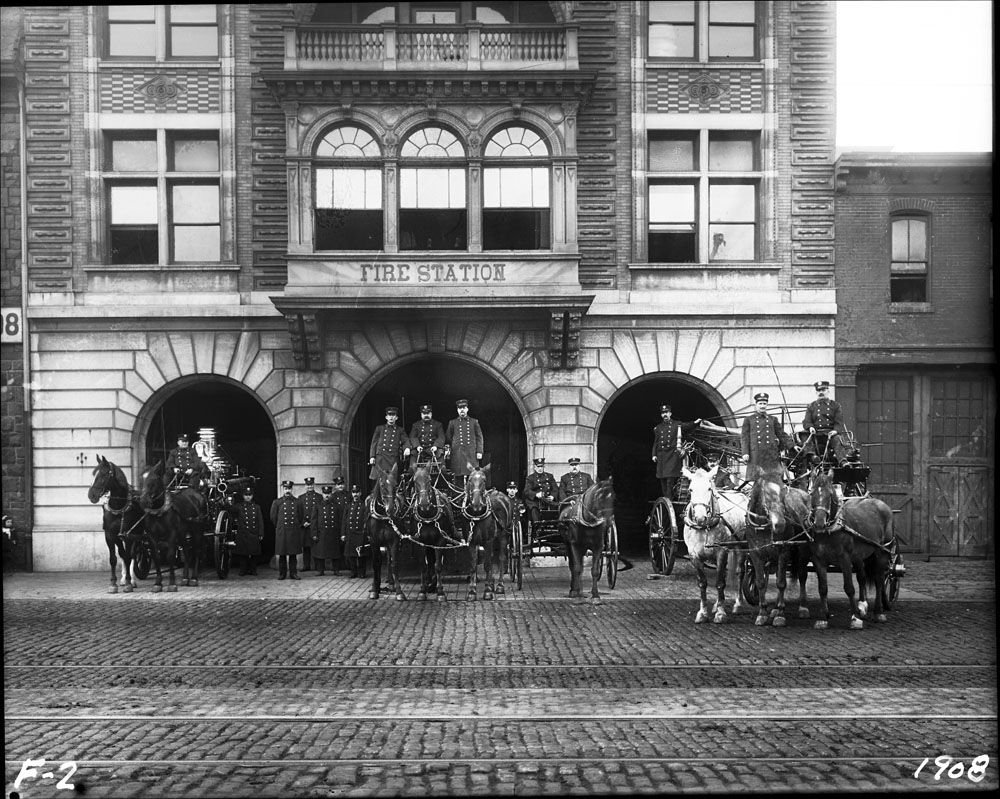
~ ~
Going deeper into the archives looking for gems, we turn up another image (below). This is one of many documenting the parades of "Founders Week" in October 1908, a huge celebration of the city's 225th birthday. Here we see a horse-drawn float on Broad Street illustrating the recent, rapid adoption of new technology: the telephone. Temporary stands between Locust and Spruce filled with spectators.

When we zoom (below) in we can see their faces. We can even read body language. At this point, we're not just looking, we're indulging in an illusion similar to actually being there.
~ ~
Forging ahead, we find an image showing another proud moment, this one in engineering and logistics. Below we see the ceremonial setting of the cornerstone atop a giant arch at 21st and Hamilton Streets in December 1898. It spans a railroad tunnel, a half-mile-long improvement completed two years later.
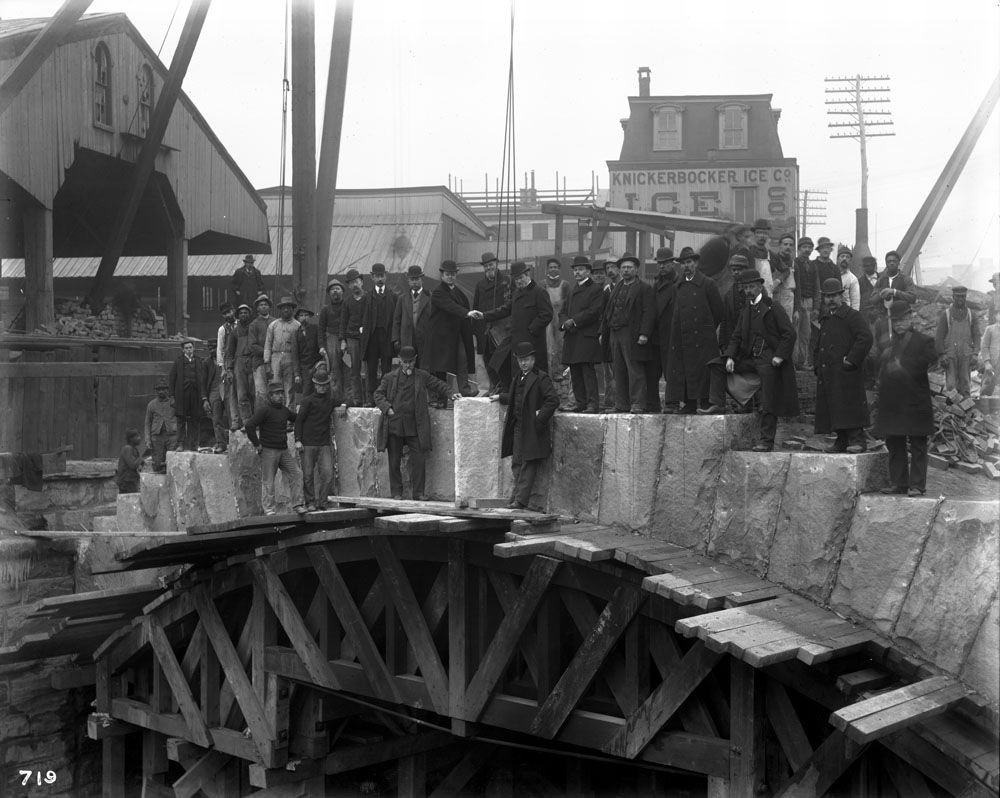
The pictorial ritual of setting the cornerstone comes alive when we examine the players on the scene more closely. Everyone is present: executives, politicians, engineers, stone masons and laborers and all are fully cognizant of being recorded in their various roles for posterity.
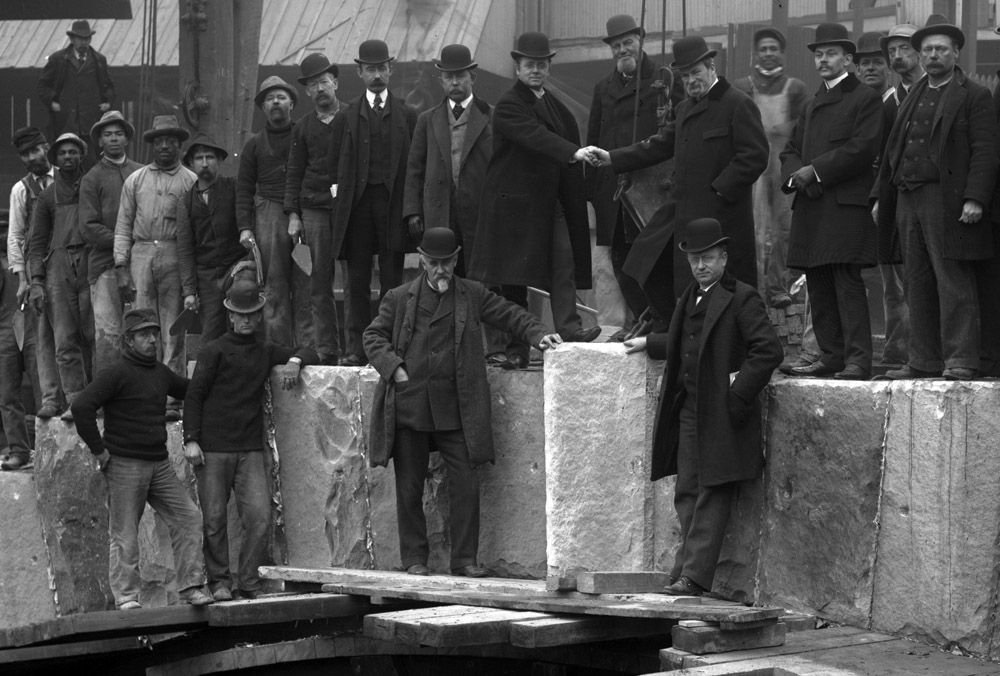
~ ~
Moving on... The distribution of fresh food in a sprawling city of, by 1900, nearly 1.3 million required many solutions. The original sheds forming a spine up Market Street had been outgrown long before and replaced with dozens of enclosed market halls. Even those were not enough. Purveyors of food and other goods proliferated at mobile "curbstone markets." Here's one at 4th and Fitzwater Streets, photographed in 1914:
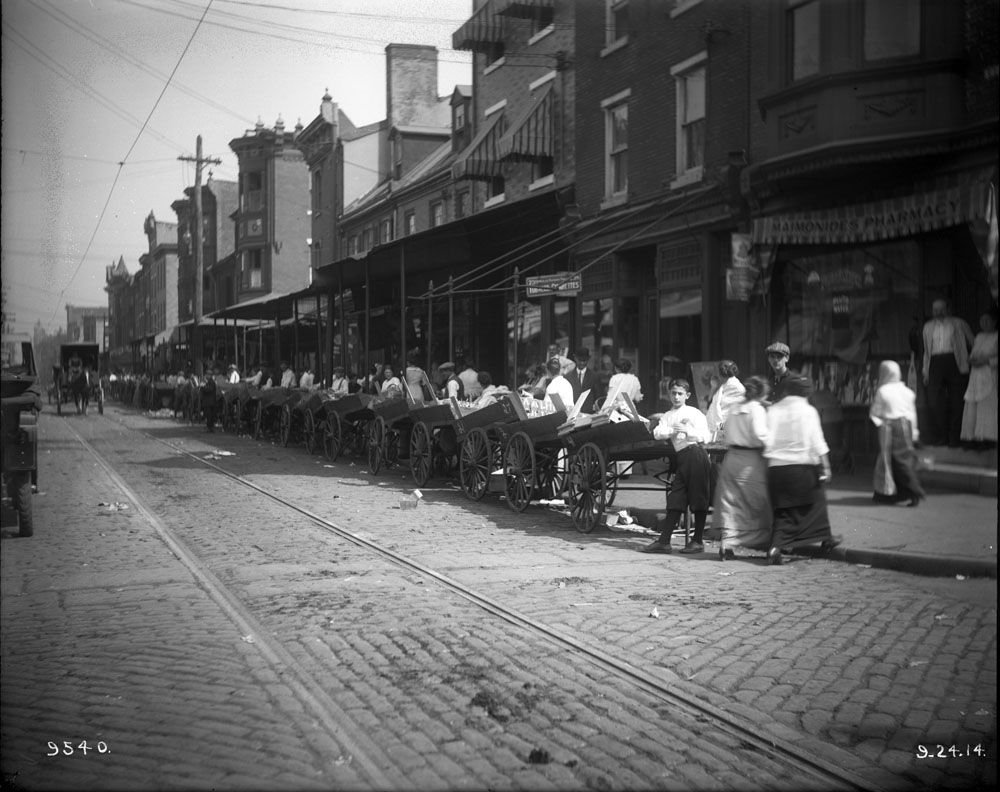
That's the history of it. But what was it actually like at those curbstone markets. We zoom in and not only can we see, but we can sense the scene in its fullness of the moment. Our perception sharpens as we look back and forth between the two images. We begin to "hear" the sounds of the street. We sharpen our sense of place, our sense of time.
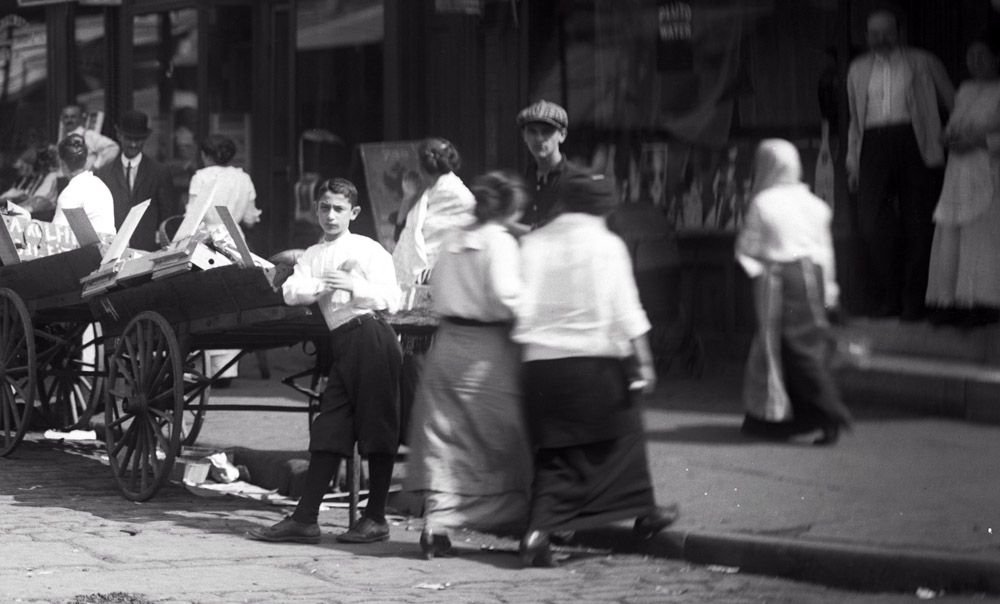
~ ~
Those sounds still echo today in our imagination, but also in reality. One of the city's original curbstone markets survives. The Italian Market, aka the 9th Street Market, has been a Philadelphia foodie fixture for more than a century. It stretches the half-mile from Christian Street to Wharton Street. Action is (and was) centered at Washington Avenue. Here we see the southwest corner of that intersection as it appeared May 23, 1937:
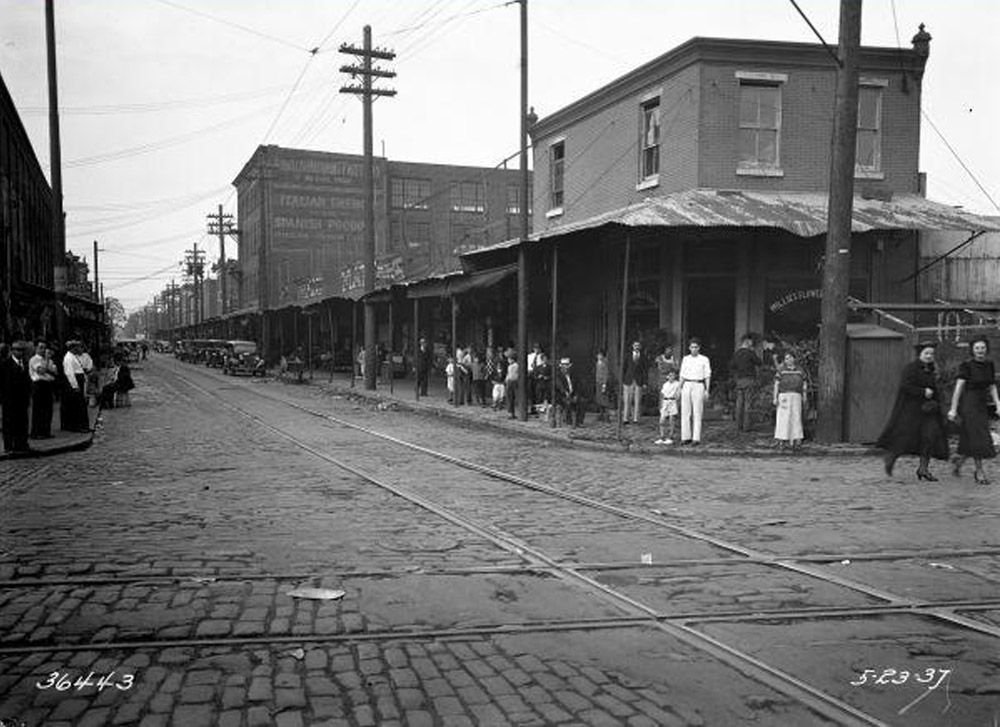
There's so much going on. A rich moment of a long-ago community. Best not to let my words get in the way of full impact. Just look; look deeply. Imagine yourself on that sidewalk. And tell me you, too, aren't getting addicted to archival time travel.
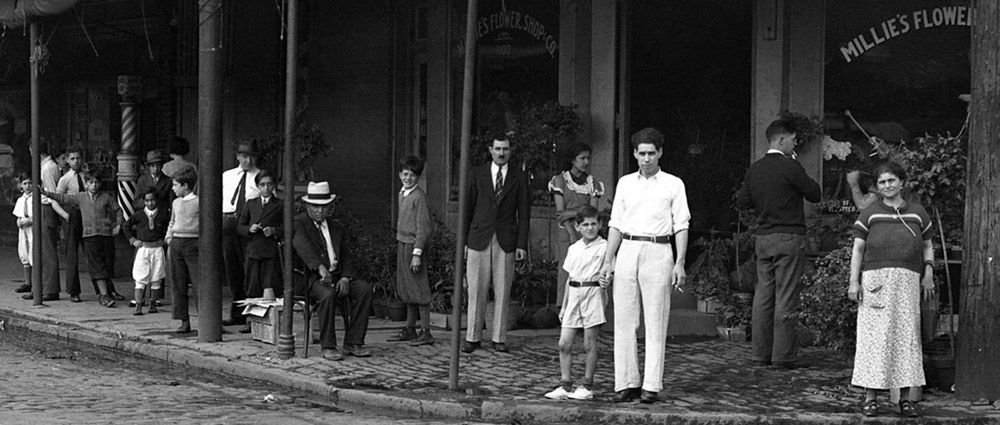
Stay tuned for more zooms from PhillyHistory.org

